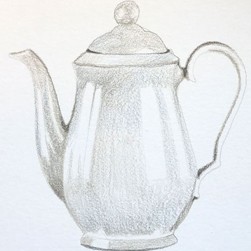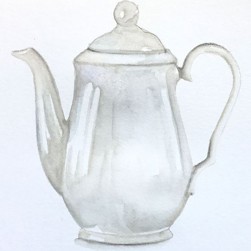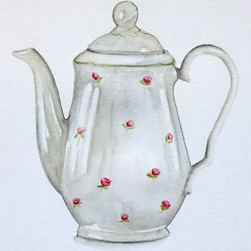
Place ideally one real coffee can before you on the table and make sure it is well illuminated. Reflections help the object, and later your drawing, look more vivid and interesting.
Alternatively, you can also use a photo as a drawing template.Draw the outline of the coffee can on the watercolour paper with warm grey V 274. Then work out the surfaces with warm grey II 271 and warm grey V 274. Do not apply any paint to your drawing in places where the surroundings are reflected in the porcelain. Apply somewhat thicker outlines to the drawing with warm grey V 274.

Blend the pigments with the water brush. You may use a lot of water, but please make sure that the outline of the can, the handle and the cover remain visible and that the highlights remain.

As soon as the watercolour paper is dry, draw the little flowers with deep scarlet red 219, light green 171 and grünerde-yellowish 168. The flowers are not blended. To finish, draw shapes on the can cover with grünerde-yellowish 168.